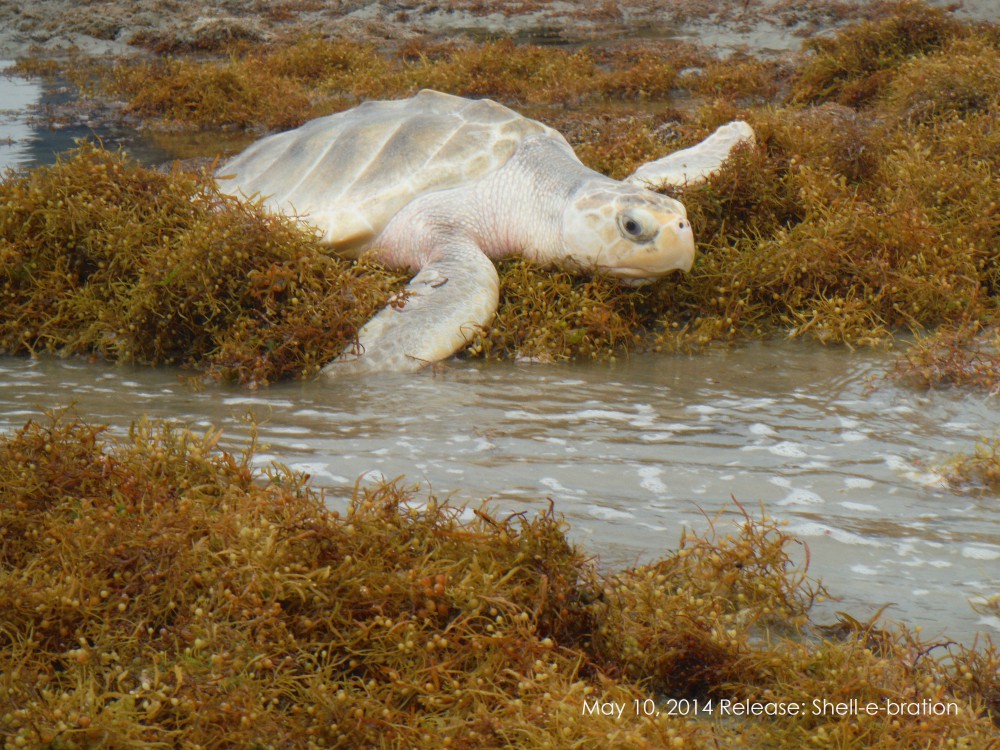Carole Allen, Gulf Office Director of Turtle Island Restoration Network, and Joanie Steinhaus, Campaign Director of the Turtle Island Restoration Network Galveston Office, attended the 2nd International Kemp’s Ridley Sea Turtle Symposium held November 18 and 19 in Brownsville, Texas. Carole’s presentation was entitled “Past, Present and Future of the Kemp’s Ridley.” She also participated in a panel of well known Kemp’s ridley pioneers including Dr. Rene Marquez of Mexico; Author and sea turtle expert Peter Pritchard of Florida, Dr. Pat Burchfield, Curator of the Gladys Porter Zoo; Tony Amos, Founder of the ARK at Port Aransas; Gary Graham of Texas Sea Grant; Dr. Thane Wibbels of the University of Alabama, Dr. Donna Shaver of the National Park Service and others moderated by Andrew Guthrie formerly of the Voice of America.
BROWNSVILLE – Evidence that could link the 2010 BP oil spill to the decline of the world’s most endangered sea turtle was presented Tuesday at a gathering of scientists and environmentalists.
A study presented at the Second International Kemp’s Ridley Sea Turtle Symposium found oil in the carapace, or shell, of 29 sea turtles that returned to feed in the area of the oil spill in 2011 and 2012.
The study found traces of oil, but the scientist who presented the information said there was no way to definitively say that the oil came from the Deepwater-Horizon oil spill, the worst in U.S. history.
The only way to say with certainty that the oil came from the BP spill would have been to analyze the turtle’s blood in the immediate aftermath of their contact with the oil, said Kimberly Reich, Sea Turtle Research Labdirector at Texas A&M University in Galveston.
Nevertheless, she pointed out that because turtles nest about every two years, the turtles exposed to oil in 2011 and 2012 would have nested in 2013 and 2014, years that saw steep declines in nesting numbers.
BP spokesman Jason Ryan said in an email that many factors can affect sea turtle nestings, “including natural variability, unusually cold temperatures and accidental capture in fishing gear.”
“Over the last two decades, there have been several significant drops in Kemp’s ridley nestings in Texas, including in 2003, when a record year in 2002 was followed by a 50 percent decline the next year,” Ryan said.
Ryan noted that the London-based oil giant has supported efforts to boost the sea turtle population, including providing money to allow experts in Texas to locate and protect nests. He said BP and federal officials continue to assess the impact of the 2010 oil spill on the turtles, but that necropsies show “the majority of stranded sea turtles likely got caught in fishing gear and drowned.”
The study by Reich is the first information released from a three-year damage assessment study to find out whether the oil spill affected the Kemp’s ridley. Numerous other studies are under way, some part of the damage study and some being done independently, to discover how the oil spill affected the Kemp’s ridley. “We hope that when we come together all our research will paint a picture,” Reich said.
So far the picture is dismal, according to an analysis of the Kemp’s ridley nesting numbers presented by Selina Heppell, professor at Oregon State University‘s department of fish and wildlife.
“It was on a rapid road to recovery and the recovery came to an abrupt halt in 2010 and we don’t know why,” Heppell said Tuesday. “What the modeling suggests is that something very dramatic and unprecedented happened to the survival and reproduction of the species.”




